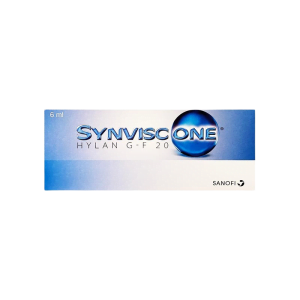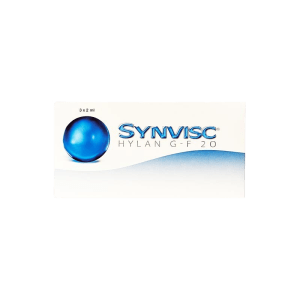At 21, Jake, an enthusiastic adventurer, encountered a life-altering challenge—knee osteoarthritis. Resolute in finding a solution, he and his doctor turned to Synvisc. The idea worked like magic, and it just took Jake a few months to recover completely. Today, he is back to his active self, participating in sports, adventures, and other things he enjoys. Jake openly shared his recovery journey on social media, becoming a source of inspiration for others navigating similar challenges.
Although osteoarthritis is statistically more common in senior adults, it can occur in individuals of all age groups, including teenagers and younger adults. A Washington Post article states that about 220,000 children and adolescents under the age of 18 have been diagnosed with arthritis in the United States. Factors such as joint injuries, genetics, or underlying health conditions may contribute to the development of osteoarthritis at a younger age.
This article explores how Synvisc benefits osteoarthritis treatment in younger patients. We will also discuss its therapeutic approach, potential benefits, age-specific factors influencing effectiveness, and long-term impact on joint health.
-
 Synvisc® One$315.92 – $359.00
Synvisc® One$315.92 – $359.00 -
 Synvisc® Classic$307.12 – $349.00
Synvisc® Classic$307.12 – $349.00
Understanding Knee Osteoarthritis in Younger Patients
Knee osteoarthritis in younger patients refers to the degeneration of the knee joint cartilage, typically below the age associated with the onset of osteoarthritis. The condition’s symptoms include joint pain, stiffness, and reduced flexibility, which can significantly impact the daily lives of younger individuals who may be more active.
The following factors contribute to the development of this condition in younger individuals:
- Genetic Predispositions: Even in younger individuals, genetic factors significantly contribute to the development of knee osteoarthritis. Due to a genetic predisposition, some individuals may be more susceptible to the degeneration of joint cartilage.
- Lifestyle Choices: Younger individuals may unknowingly engage in activities or adopt lifestyles that contribute to the early onset of knee osteoarthritis. Factors such as obesity, inadequate physical activity, and poor dietary choices can exacerbate the condition.
- Injuries and Trauma: Joint injuries and trauma, particularly those affecting the knee, can be significant precursors to the development of osteoarthritis. It can either be sports-related injury, accident, or repetitive stress on the joints.
- Occupational Factors: Certain occupations, such as those involving repetitive stress on the knees, can contribute to the development of osteoarthritis.
- Inflammatory Processes: Emerging research suggests a potential link between inflammatory processes and the development of osteoarthritis.
Synvisc Treatment: Mechanism and Benefits
Synvisc is a viscosupplement, a gel-like substance composed of hyaluronic acid—a natural component found in joint fluid. Administered through an injection directly into the knee joint, Synvisc serves to supplement and enhance the lubricating properties of the natural synovial fluid. This process aids in reducing friction within the joint, alleviating pain, and enhancing joint mobility. By providing a cushioning effect and supporting smoother joint movement, Synvisc contributes to the restoration of function in the affected knee.
Here are the potential benefits of Synvisc treatment in younger patients:
- Pain Alleviation: Synvisc treatment is adept at providing effective pain relief, a particularly crucial benefit for younger patients experiencing discomfort associated with knee osteoarthritis. The viscosupplement’s cushioning effect helps reduce friction within the joint, diminishing pain and promoting a more comfortable range of motion.
- Enhanced Joint Mobility: One of the notable advantages for younger patients lies in the improved joint mobility facilitated by Synvisc. The gel-like substance enhances the lubricating properties of the natural synovial fluid, contributing to smoother joint movement. This increased mobility is especially valuable for individuals with active lifestyles, allowing them to engage in physical activities with greater ease.
- Preservation of Joint Function: Synvisc not only addresses the symptoms but also contributes to the preservation of joint function. For younger individuals seeking to maintain or restore their joint health, this treatment option offers a valuable mechanism for supporting overall joint functionality.
- Tailored to Active Lifestyles: Younger patients often lead more active lives, and Synvisc accommodates such lifestyles. Its viscoelastic properties provide stability during dynamic movements, making it suitable for those who wish to engage in sports or recreational activities or maintain an active routine.
- Reduced Reliance on Pain Medications: A notable benefit of Synvisc treatment is the potential reduction in the need for pain medications. By tackling the underlying cause of pain and discomfort in the knee joint, this therapy can reduce dependence on conventional pain relief medications, offering a more sustainable and focused approach.
- Minimized Invasive Interventions: Synvisc treatment presents an appealing alternative for younger patients seeking to avoid more invasive interventions. As a non-surgical option, it provides a viable route to managing knee osteoarthritis without the potential risks and recovery associated with surgical procedures.
- Improved Quality of Life: Ultimately, the collective benefits of Synvisc treatment enhance the quality of life for younger patients with knee osteoarthritis. Beyond addressing symptoms, this therapy supports an active lifestyle, diminishes pain, and fosters a sense of well-being, allowing individuals to pursue their daily activities with greater comfort and enjoyment.
Unique Considerations for Younger Patients
Age-Related Factors Influencing the Effectiveness of Synvisc
The efficacy of Synvisc One injections for knee osteoarthritis varies with age due to differing levels of joint degeneration.
Regarding cost, Synvisc One injection cost may vary based on factors like healthcare plans, insurance coverage, and treatment schedules. It’s advisable to consult healthcare providers or insurers for accurate cost information.
Several age-related factors can influence the effectiveness of Synvisc treatment for knee osteoarthritis in younger patients:
- Resilience of Joint Tissues: Younger individuals typically show greater resilience in their joint tissues. Understanding how Synvisc interacts with these resilient tissues is crucial. It involves exploring how the gel-like substance complements the natural composition of joint tissues in younger patients, aiming to optimize its effectiveness in providing pain relief and enhancing joint function.
- Metabolic Activity: Age plays a role in metabolic activity, impacting the body’s ability to repair and regenerate tissues. In younger patients, the higher metabolic rate may influence the absorption and distribution of Synvisc within the joint.
- Overall Health: Younger patients often enjoy better overall health, and this can influence how their bodies respond to Synvisc. Factors such as nutritional status, immune function, and lifestyle habits can affect the treatment’s efficacy.
The Common Synvisc Side Effects: What to Expect After Knee Osteoarthritis Treatment
Synvisc, a treatment for knee osteoarthritis, generally has mild side effects. The most common ones include:
- Pain or Discomfort: Mild to moderate pain or discomfort at the injection site can occur after the procedure.
- Swelling: Some individuals might experience swelling around the knee joint following the injection.
- Stiffness: Temporary joint stiffness might be felt after the injection, usually subsiding within a few days.
- Redness or Warmth: The injection site might become slightly red or warm, which typically resolves without intervention.
- Allergic Reactions: In rare cases, allergic reactions like rash, itching, or hives might occur. Severe allergic reactions are extremely rare but possible.
- Infection: Though rare, there’s a minimal risk of infection at the injection site.
It’s important to discuss potential side effects with your healthcare provider before undergoing Synvisc treatment. Not everyone experiences these side effects, and they often diminish within a short time. Monitoring your symptoms and consulting your doctor if you have concerns is advisable.
Addressing Concerns About Long-Term Joint Health in Younger Individuals
This part involves a thorough exploration of how Synvisc treatment influences the trajectory of joint health over an extended period.
- Cartilage Preservation: By enhancing joint lubrication and reducing friction, Synvisc aims to slow down the degradation of cartilage in younger patients. This preservation is vital for maintaining joint integrity and functionality in the long term.
- Enhanced Joint Stability: The gel-like substance provides additional support to the joint structure, potentially reducing the risk of instability and related issues.
- Prevention of Further Degeneration: Synvisc not only addresses current symptoms but also impedes further degeneration of the joint. This preventive property of this product is crucial for younger patients, curbing the progression of knee osteoarthritis and minimizing the risk of advanced joint deterioration over time.
- Sustained Joint Function: The ultimate goal is to ensure sustained joint function in the long term. By mitigating the factors that contribute to joint degeneration, Synvisc aims to support ongoing joint health, allowing younger individuals to maintain an active and fulfilling lifestyle without undue limitations imposed by knee osteoarthritis.
Revitalizing Joint Health with Synvisc
In the journey of preserving joint health for younger individuals dealing with knee osteoarthritis, Jake’s story at the age of 21 illustrates the transformative impact of Synvisc. Beyond relieving Jake’s pain, Synvisc became a beacon of hope.
As we conclude, it’s clear that this therapy offers more than immediate relief. Synvisc promises enhanced joint mobility, pain alleviation, and the preservation of joint function—tailored for the dynamic lifestyles of younger individuals. From age-related factors to long-term joint health and disease management, Synvisc emerges not just as a treatment but as a comprehensive solution for knee osteoarthritis in the younger generation, offering enduring well-being.
Can I drive after knee gel injections?
After knee gel injections, it’s advisable to refrain from driving for at least 24 hours. The injection site might cause discomfort or affect your ability to operate a vehicle safely. Follow your healthcare provider’s advice and ensure you’re comfortable and alert before considering driving post-treatment. Safety should be the priority.








